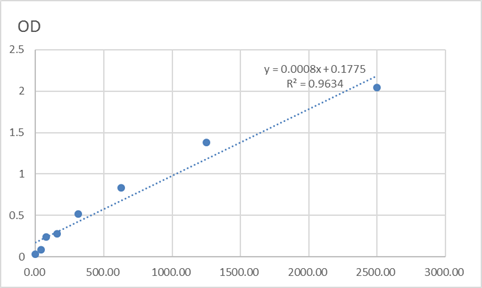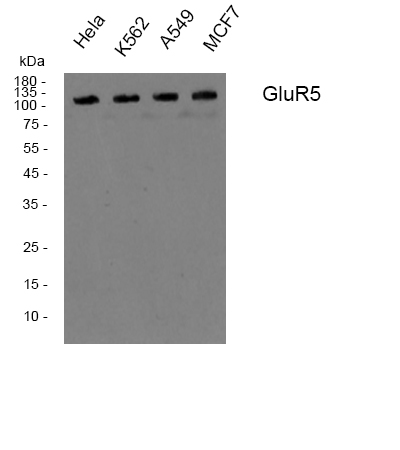Total GluR-5 Cell-Based Colorimetric ELISA Kit
- Catalog No.:KA3275C
- Applications:ELISA
- Reactivity:Human;Mouse;Rat
- Gene Name:
- GRIK1
- Human Gene Id:
- 2897
- Human Swiss Prot No:
- P39086
- Mouse Swiss Prot No:
- Q60934
- Rat Swiss Prot No:
- P22756
- Storage Stability:
- 2-8°C/6 months
- Other Name:
- Glutamate receptor, ionotropic kainate 1 (Excitatory amino acid receptor 3) (EAA3) (Glutamate receptor 5) (GluR-5) (GluR5)
- Detection Method:
- Colorimetric
- Background:
- alternative products:Additional isoforms seem to exist,function:Ionotropic glutamate receptor. L-glutamate acts as an excitatory neurotransmitter at many synapses in the central nervous system. Binding of the excitatory neurotransmitter L-glutamate induces a conformation change, leading to the opening of the cation channel, and thereby converts the chemical signal to an electrical impulse. The receptor then desensitizes rapidly and enters a transient inactive state, characterized by the presence of bound agonist. May be involved in the transmission of light information from the retina to the hypothalamus.,miscellaneous:The postsynaptic actions of Glu are mediated by a variety of receptors that are named according to their selective agonists. This receptor binds domoate > kainate > L-glutamate = quisqualate > CNQX = DNQX > AMPA > dihydrokainate > NMDA.,RNA editing:Partially edited.,similarity:Belongs to the glutamate-gated ion channel (TC 1.A.10) family.,subunit:Homotetramer or heterotetramer of pore-forming glutamate receptor subunits. Tetramers may be formed by the dimerization of dimers (Probable). The unedited version (Q) assembles into a functional kainate-gated homomeric channel, whereas the edited version (R) is unable to produce channel activity when expressed alone. Both edited and unedited versions can form functional channels with GRIK4 and GRIK5.,tissue specificity:Most abundant in the cerebellum and the suprachiasmatic nuclei (SCN) of the hypothalamus.,
- Function:
- ion transport, cellular ion homeostasis, cell surface receptor linked signal transduction, glutamate signaling pathway,cell-cell signaling, synaptic transmission, behavior, positive regulation of cell communication, negative regulation of cell communication, regulation of gamma-aminobutyric acid secretion, positive regulation of gamma-aminobutyric acid secretion, transmission of nerve impulse, cellular homeostasis, adult behavior, regulation of neurological system process, negative regulation of neurological system process, positive regulation of neurological system process,regulation of synaptic transmission, GABAergic, positive regulation of synaptic transmission, GABAergic, regulation of organic acid transport, positive regulation of organic acid transport, multicellular organismal response to stress,regulation of membrane potential, homeostatic process, regulation of system process,
- Subcellular Location:
- Cell membrane; Multi-pass membrane protein. Cell junction, synapse, postsynaptic cell membrane; Multi-pass membrane protein.
- Expression:
- Most abundant in the cerebellum and the suprachiasmatic nuclei (SCN) of the hypothalamus.
- June 19-2018
- WESTERN IMMUNOBLOTTING PROTOCOL
- June 19-2018
- IMMUNOHISTOCHEMISTRY-PARAFFIN PROTOCOL
- June 19-2018
- IMMUNOFLUORESCENCE PROTOCOL
- September 08-2020
- FLOW-CYTOMEYRT-PROTOCOL
- May 20-2022
- Cell-Based ELISA│解您多样本WB检测之困扰
- July 13-2018
- CELL-BASED-ELISA-PROTOCOL-FOR-ACETYL-PROTEIN
- July 13-2018
- CELL-BASED-ELISA-PROTOCOL-FOR-PHOSPHO-PROTEIN
- July 13-2018
- Antibody-FAQs



